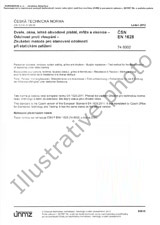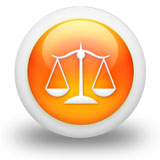We need your consent to use the individual data so that you can see information about your interests, among other things. Click "OK" to give your consent.
ČSN ETSI EN 302186-V2.1.1 (876046)
Satellite Earth Stations and Systems (SES); Harmonised Standard for satellite mobile Aircraft Earth Stations (AESs) operating in the 11/12/14 GHz frequency bands covering the essential requirements of article 3.2 of the Directive 2014/53/EU
Translate name
STANDARD published on 1.12.2016
The information about the standard:
Designation standards: ČSN ETSI EN 302186-V2.1.1
Classification mark: 876046
Catalog number: 500823
Publication date standards: 1.12.2016
SKU: NS-668738
The number of pages: 64
Approximate weight : 192 g (0.42 lbs)
Country: Czech technical standard
Category: Technical standards ČSN
The category - similar standards:
Radio relay and fixed satellite communications systemsSatellite
Annotation of standard text ČSN ETSI EN 302186-V2.1.1 (876046):
V2.1.1
The present document specifies certain minimum technical performance requirements of Aircraft Earth Station (AES) equipment with both transmit and receive capabilities for provision of aeronautical mobile satellite service
The AES has the following characteristics:
- " These AESs are equipment for installation on aircraft.
- " The AES could consist of a number of modules from the antenna subsystem to the user interfaces.
- " The AES uses linear polarization.
- " The AES system uses digital modulation.
- " The AES operates through a GSO satellite at least 3° away from any other geostationary satellite oper-ating in the same frequency band and covering the same area.
- " The antenna of the AES is directional, with means of tracking the satellites, which can be achieved by using either an active phase array or reflective type configuration.
- " These AESs are operating as part of a satellite network used for the distribution and/or exchange of in-formation between users.
- " These AESs are controlled and monitored by a Network Control Facility (NCF). The NCF is outside the scope of the present document.
- " When on the ground, the AES does not transmit at elevation angles below 7o with respect to the local horizontal plane, except at locations where transmissions below 7o are permitted by the local Admini-stration; (the minimum elevation angle is also limited as per clause 4.2).
The technical requirements in the present document are in two major categories:
- " emission limits: to protect other radio services and systems from harmful interference generated by the AES in normal use;
- " AES Control and Monitoring Functions (CMF): to protect other radio services and systems from un-wanted transmissions from the AES. The CMF in each AES is capable of answering to commands from the Network Control Facility (NCF) for its supporting satellite network.
The present document applies to the AESs with their ancillary equipment and its various ports, and when operated within the boundary limits of the operational environmental profile declared by the manufacturer.
The technical requirements for the AES in regard to the Power Flux Density (PFD) limits to protect Fixed Service (FS) and Radio Astronomy Service (RAS) are based on annexes B and C of Recommendation ITU-R M.1643 [5] and ECC Report 26 [i.4]. Furthermore, in relation to the protection of the Fixed Satellite Service (FSS) the technical requirements of the AES take into account annex A of Recommendation ITU-R M.1643 [5].
The present document is intended to cover the provisions of Directive 2014/53/EU [6] (RE Directive) article 3.2, which states that ". radio equipment shall be so constructed that it both effectively and supports the use of radio spectrum allocated in order to avoid harmful interference".
In addition to the present document, other ENs that specify technical requirements in respect of essential re-quirements of other parts of article 3 of the RE Directive [6] may apply to equipment within the scope of the pre-sent document.
NOTE: A list of such ENs is included on the web site at: http:\www.newapproach.org.
The present document does not cover equipment compliance with relevant civil aviation regulations. In this respect, an AES, for its installation and operation on board an aircraft is subject to additional national or international civil aviation airworthiness certification requirements, for example to EUROCAE ED-14D [4]
Preview of the standard ČSN ETSI EN 302186-V2.1.1 (876046)
We recommend:
Updating of laws
Do you want to be sure about the validity of used regulations?
We offer you a solution so that you could use valid and updated legislative regulations.
Would you like to get more information? Look at this page.




 Cookies
Cookies
